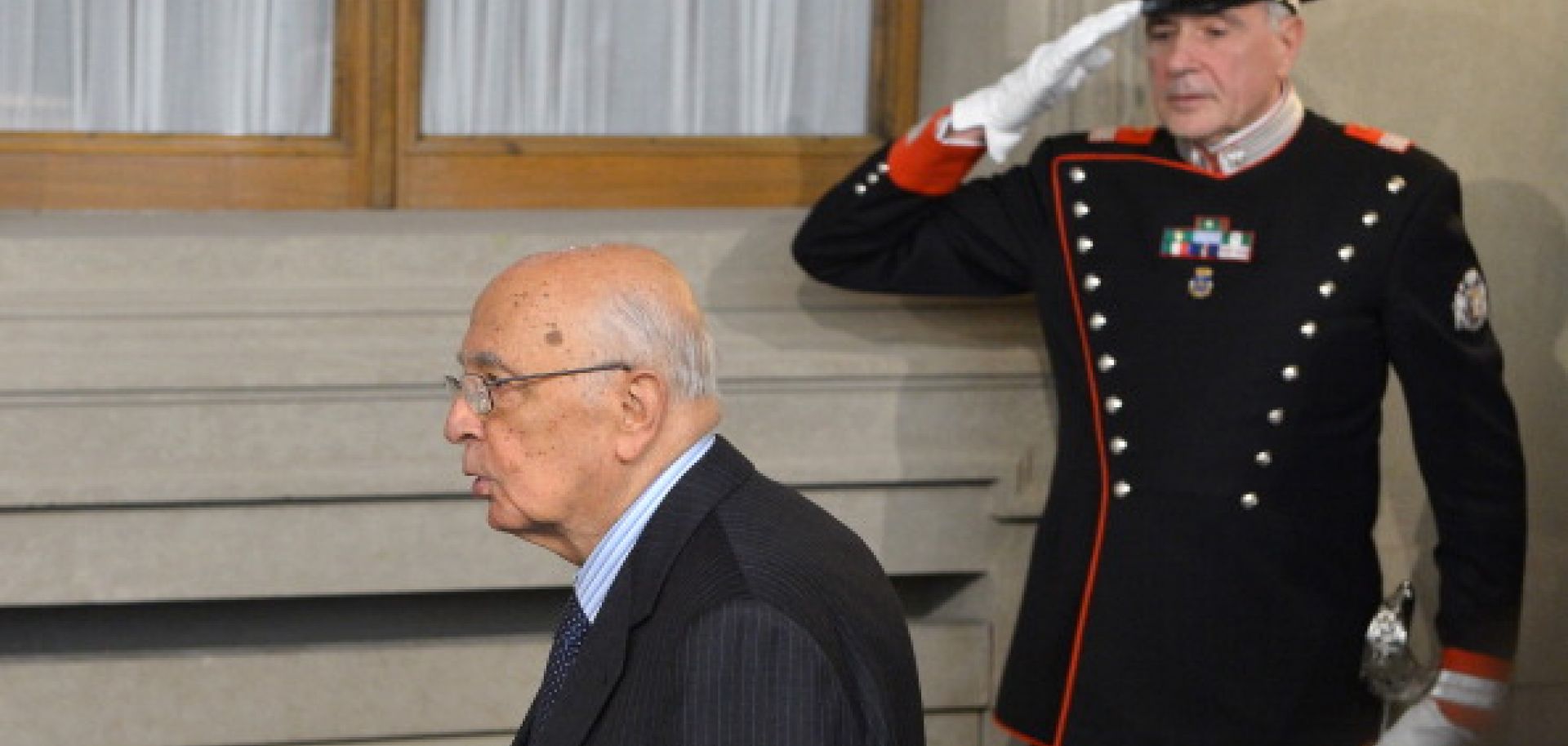ASSESSMENTS
Explaining Italy's Fragmented Politics
Apr 18, 2013 | 11:00 GMT

Italy's President Giorgio Napolitano on March 30 at the Quirinale, the Italian presidential palace in Rome.
VINCENZO PINTO/AFP/Getty Images
Summary
On April 18, the Italian Parliament began the process of appointing Italy's next president. The decision takes place amid the political paralysis that has taken hold since elections in February netted an inconclusive result.
While the current political uncertainty fits within the context of Europe's economic and political crisis, Italy's social and political fragmentation is historical — the result of its geographic characteristics, its unequal levels of economic development and its repeatedly being invaded by foreign powers. The essential role of the central government in Rome is to manage the contradicting interests of internal and external actors, a burden that hobbles attempts at economic and political reform. As instability grows, finding that balance becomes an increasingly difficult task.
Subscribe Now
SubscribeAlready have an account?
